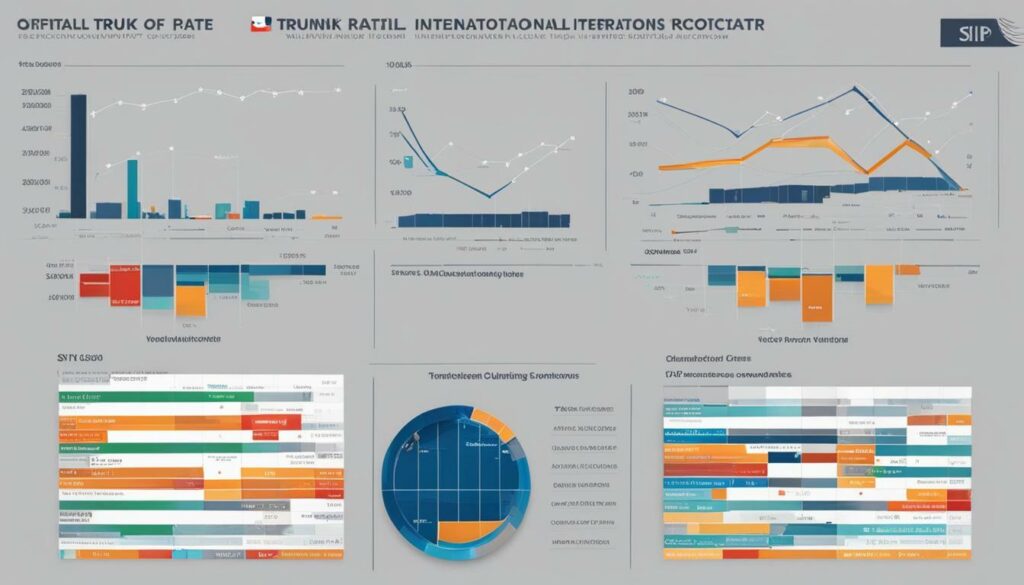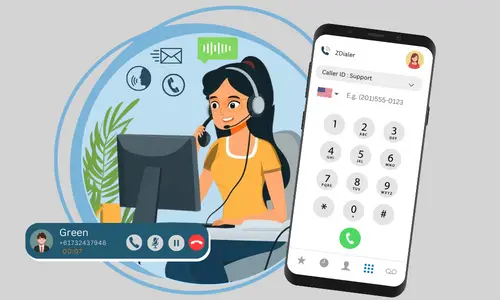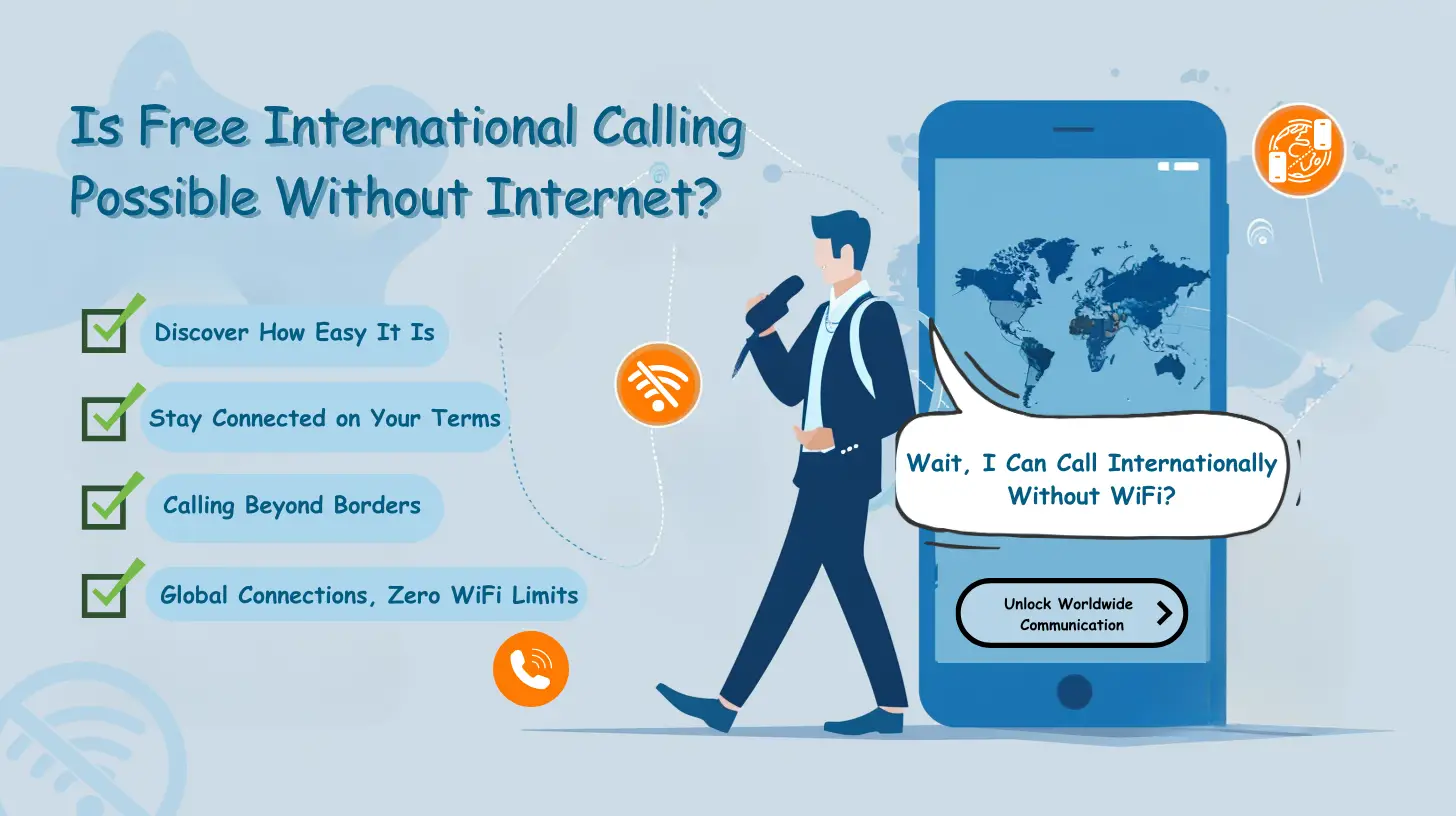Welcome to our essential guide on understanding SIP trunk call paths and how they revolutionize communication. In today’s fast-paced business world, effective and efficient communication is crucial for success. SIP trunking, or Session Initiation Protocol trunking, is a powerful technology that enables businesses to optimize their communication pathways.
- SIP trunking consolidates voice and data networks, utilizing virtual connections known as “trunks.”
- Benefits of SIP trunking include cost savings, scalability, business continuity, flexibility, and access to advanced features.
- SIP trunking for international calls overcomes limitations and challenges of traditional methods.
- Factors affecting SIP trunk international rates include distance-based pricing and carrier interconnection costs.
- Understanding SIP trunk channels is essential for making informed decisions about telephone system needs.
What is SIP Trunking and How Does it Work?
SIP trunking is a technology that enables businesses to make and receive phone calls over the internet using voice over IP, revolutionizing telecommunication. It consolidates voice and data networks into a single solution, utilizing virtual connections known as “trunks” to connect the business’s phone system with an Internet Telephony Service Provider (ITSP). These trunks act as communication pathways, carrying voice data over IP networks instead of traditional telephone lines.
With SIP trunking, businesses can enjoy the benefits of cost savings, scalability, business continuity, flexibility, and advanced features. By leveraging the power of the internet, SIP trunking eliminates the need for separate networks for voice and data, reducing infrastructure costs and enabling businesses to scale their communication systems more efficiently.
Traditional international calling methods often come with limitations such as high costs, call quality issues, and security concerns. SIP trunking for international calls addresses these challenges by utilizing IP networks to transmit voice data, ensuring improved call quality and enhanced security measures.

| SIP Trunking Process | Explanation |
|---|---|
| Initiating a Call | A call is initiated from a business’s phone system using a SIP-enabled device. |
| Call Routing | The call is routed through the business’s internal network and then to the ITSP via the internet. |
| ITSP Connection | The ITSP connects the call to the recipient’s phone system, either through a SIP trunk or traditional phone lines. |
| Establishing the Call | The call is established between the two endpoints, allowing the parties to communicate. |
Understanding SIP trunk channels is crucial for businesses as it is the virtual “pipe” that carries data channels between their office and the provider’s location. These channels determine the capacity for concurrent calls and the number of lines available for communication. The number of SIP channels a trunk holds can vary depending on the provider, offering businesses flexibility in choosing the right capacity for their telephone system needs.
In summary, SIP trunking is a transformative technology that enables businesses to leverage voice over IP and the internet to make and receive phone calls. It offers numerous benefits such as cost savings, scalability, business continuity, and access to advanced features. By embracing SIP trunking, businesses can enhance their communication capabilities and embrace the future of telecommunication.
The Benefits of SIP Trunking
SIP trunking offers a plethora of benefits, including cost savings, scalability, and access to advanced features, making it an ideal solution for businesses. With traditional phone systems, businesses often struggle with high costs associated with long-distance and international calls. However, SIP trunking utilizes VoIP technology to transmit calls over the internet, reducing costs significantly. By consolidating voice and data networks into one solution, businesses can also streamline their communication infrastructure, leading to further cost savings.
Scalability is another advantage of SIP trunking. Traditional phone lines have a limited capacity, requiring businesses to install additional physical lines to accommodate increased call volumes. In contrast, SIP trunks can easily handle multiple simultaneous calls, allowing businesses to scale their communication needs without the hassle and expense of physical line installations.
Furthermore, SIP trunking provides access to advanced features that enhance communication capabilities. Features such as call forwarding, call recording, and auto-attendants enable businesses to improve customer service and efficiency. Additionally, SIP trunking offers flexibility, allowing businesses to integrate their communication systems with other technologies like CRM software and unified communications platforms.
The Benefits of SIP Trunking:
- Cost savings through VoIP technology.
- Scalability to accommodate increased call volumes.
- Access to advanced features for enhanced communication capabilities.
- Flexibility to integrate with other technologies.
Overall, SIP trunking is a game-changer for businesses looking to optimize their communication infrastructure. It not only reduces costs but also provides the flexibility and scalability necessary to keep pace with evolving business needs. By harnessing the power of VoIP technology and advanced features, businesses can streamline their communication processes and achieve a competitive edge in today’s digital landscape.

SIP trunking for international calls overcomes the limitations of traditional methods, providing improved call quality and enhanced security. With traditional international calling methods, businesses often face challenges such as high costs, call quality issues, and security concerns. These limitations can hamper effective communication and hinder business operations. However, SIP trunking offers a more efficient and reliable solution.
By utilizing IP networks to transmit voice data, SIP trunking ensures better call quality compared to traditional methods. Voice over IP technology enables businesses to make and receive calls over the internet, resulting in clear audio and minimal disruptions. This enhanced call quality improves the overall communication experience and helps businesses maintain professional connections with their international partners.
In addition to call quality, SIP trunking addresses security concerns faced by traditional international calling methods. With encryption and authentication protocols in place, SIP trunking ensures secure transmission of voice data. This safeguards sensitive information and protects businesses from potential security breaches. By adopting SIP trunking, businesses can have peace of mind knowing that their international calls are protected.
| SIP Trunking | Traditional International Calling Methods |
|---|---|
| Improved call quality | Potential call quality issues |
| Enhanced security | Possible security concerns |
| Cost-effective | Higher costs |
Transitioning from traditional international calling methods to SIP trunking can yield significant benefits for businesses. Not only does it provide improved call quality and enhanced security, but it also offers cost savings. With SIP trunking, businesses can eliminate the need for separate voice and data networks, reducing infrastructure costs. Additionally, SIP trunking allows for flexible scalability, enabling businesses to easily adjust their communication requirements based on their needs.
Overall, the advantages of SIP trunking over traditional international calling methods make it a compelling solution for businesses looking to enhance their global communication capabilities. By embracing SIP trunking, businesses can enjoy reliable, high-quality calls while ensuring the security of their international communications.

Understanding the factors that affect SIP trunk international rates is crucial for businesses seeking cost-effective communication solutions. With SIP trunking, businesses can make and receive international calls over the internet using Voice over IP (VoIP) technology. This allows them to bypass traditional international calling methods and their associated limitations, such as high costs, call quality issues, and security concerns.
One of the key factors that influences SIP trunk international rates is distance-based pricing. Unlike traditional phone lines, which are distance-sensitive and incur higher costs for longer distances, SIP trunking leverages IP networks to transmit voice data. This means that the distance between the calling and receiving parties does not significantly impact the cost of the call. As a result, businesses can enjoy more predictable and affordable international calling rates.
Another factor that affects SIP trunk international rates is carrier interconnection costs. These costs are associated with the connections between different telecommunication carriers and their networks. These interconnection costs can vary depending on the agreements between the carriers and the volume of traffic being exchanged. Businesses should consider these costs when selecting a SIP trunking provider, as they can impact the overall cost of international calls.
Factors Affecting SIP Trunk International Rates:
| Factor | Description |
|---|---|
| Distance-Based Pricing | SIP trunking leverages IP networks, which reduces the impact of distance on international call rates. |
| Carrier Interconnection Costs | The costs associated with the connections between telecommunication carriers can impact SIP trunk international rates. |
By understanding these factors, businesses can make informed decisions when selecting a SIP trunking provider and optimizing their international communication costs. SIP trunking offers a cost-effective alternative to traditional international calling methods, providing businesses with the flexibility, scalability, and advanced features they need to enhance their communication solutions.

SIP trunk channels serve as the virtual pathways that connect a customer’s office with the provider’s location, allowing for concurrent calls. These channels act as the data “pipes” that carry voice and data traffic between the two endpoints. By utilizing SIP trunking technology, businesses can streamline their communication processes and enhance their telephone system capabilities.
One of the key advantages of SIP trunk channels is their ability to support multiple lines or paths for simultaneous calls. This means that businesses can handle a significant volume of incoming and outgoing calls without experiencing any disruptions. Whether it’s a small business with a few employees or a large enterprise with multiple departments, SIP trunk channels can scale to accommodate the communication needs of any organization.
To further illustrate the concept of SIP trunk channels, let’s consider an example: Imagine a company with 50 employees spread across different locations. Each employee may be handling calls simultaneously throughout the day. With SIP trunk channels, this company can ensure that every employee has access to a dedicated line, resulting in improved call quality and reduced call congestion.
Benefits of SIP Trunk Channels
Utilizing SIP trunk channels offers several benefits for businesses. First and foremost, it enables cost savings by eliminating the need for traditional phone lines and associated hardware. Businesses can leverage their existing internet connection to make and receive calls, resulting in significant cost reductions. Additionally, SIP trunking provides businesses with scalability, allowing them to add or remove channels as their communication needs evolve.
Furthermore, SIP trunk channels contribute to better business continuity. In the event of a power outage or other disruptions, calls can be seamlessly rerouted to alternative locations, ensuring uninterrupted communication. This level of flexibility is crucial for businesses that rely heavily on uninterrupted voice communication with customers, partners, and stakeholders.
Lastly, SIP trunk channels provide access to advanced features and functionalities, such as call routing, call recording, and interactive voice response. These features empower businesses to enhance their customer interactions, streamline their workflows, and improve overall communication efficiency.

| Benefits of SIP Trunk Channels |
|---|
| Cost savings through the elimination of traditional phone lines |
| Scalability to accommodate changing communication needs |
| Enhanced business continuity with seamless call routing |
| Access to advanced features and functionalities |
The Importance of SIP Trunk Channels for Customer Decisions
Gaining a comprehensive understanding of SIP trunk channels helps customers make informed decisions about their telephone system requirements. SIP trunking, or Session Initiation Protocol trunking, is a technology that allows businesses to make and receive phone calls over the internet using VoIP. By consolidating voice and data networks into a single solution, SIP trunking offers numerous benefits, such as cost savings, scalability, business continuity, flexibility, and access to advanced features.
When it comes to selecting a telephone system, the number of SIP trunk channels plays a crucial role. SIP trunk channels serve as virtual “pipes” that carry data channels between the customer’s office and the provider’s location. These channels can hold multiple lines or paths for concurrent calls, allowing businesses to handle the required call volume without any disruptions. It is essential for customers to understand the capacity of SIP trunk channels, as it directly impacts their ability to accommodate incoming and outgoing calls efficiently.
Advantages of Understanding SIP Trunk Channels
By having a clear understanding of SIP trunk channels, customers can assess their communication needs accurately. They can determine the number of channels required to support their call volume and ensure smooth operations. Whether it’s a small business with a few concurrent calls or a large enterprise with high call traffic, the right SIP trunk channel capacity is crucial for maintaining effective communication.
Furthermore, understanding SIP trunk channels helps customers optimize costs by ensuring they only pay for the necessary number of channels. In addition, it allows them to plan for future growth and easily scale their telephone system as their business expands. By leveraging the appropriate number of SIP trunk channels, businesses can enhance their overall communication infrastructure while maximizing efficiency and minimizing expenses.
In conclusion, gaining a comprehensive understanding of SIP trunk channels is essential for customers to make informed decisions about their telephone system needs. It empowers businesses to choose the right capacity of channels, optimize costs, and effectively scale their communication infrastructure. By leveraging SIP trunking technology and making informed decisions about channel capacity, businesses can enhance their communication capabilities and drive growth in today’s digital era.
| SIP Trunk Channel Capacity | Benefits |
|---|---|
| Accurate assessment of call volume | Efficient handling of incoming and outgoing calls |
| Optimized costs | Pay for the necessary number of channels |
| Scalability | Plan for future growth and easily scale the telephone system |

The capacity of SIP trunk channels can vary among providers, with each trunk accommodating a different number of channels. The number of channels a trunk holds determines the number of concurrent calls that can be made or received by a business. It is essential for businesses to understand the capacity of SIP trunk channels to ensure their telephone system can handle their communication needs.
When choosing a SIP trunk provider, businesses should consider their current call volume and anticipate future growth. Providers typically offer different packages or plans with varying channel capacities. It is important to assess the number of concurrent calls the business requires and select a SIP trunking package that can support that capacity.
To better understand how SIP trunk channel capacity works, let’s take a look at the following table:
| SIP Trunk Provider | Channel Capacity |
|---|---|
| Provider A | 10 channels |
| Provider B | 20 channels |
| Provider C | 30 channels |
In this example, Provider A offers a SIP trunk package with a capacity of 10 channels, while Provider B offers 20 channels, and Provider C offers 30 channels. Businesses can choose the provider that best aligns with their call volume requirements and ensures they have enough available channels to handle their communication needs.

- SIP trunk channel capacity varies among providers.
- Each trunk can accommodate a different number of channels.
- Businesses should assess their call volume and select a SIP trunking package with a suitable channel capacity.
- Understanding SIP trunk channel capacity helps businesses make informed decisions about their telephone system needs.
Exploring the Benefits of SIP Trunk Call Paths
SIP trunk call paths offer numerous benefits, empowering businesses with improved communication solutions. By utilizing SIP trunking technology, businesses can consolidate their voice and data networks into a single solution, simplifying their communication infrastructure and reducing costs. With virtual connections known as “trunks,” businesses can seamlessly connect their phone systems to an Internet Telephony Service Provider (ITSP), enabling them to make and receive phone calls over the internet using Voice over IP (VoIP).
One of the key advantages of SIP trunking is its scalability. Businesses can easily add or remove trunks to accommodate their changing communication needs. This flexibility ensures that businesses only pay for the resources they require, eliminating the need for expensive hardware or fixed line rental costs. Additionally, SIP trunking offers enhanced business continuity, allowing calls to be automatically rerouted to alternative locations in the event of disruptions, ensuring uninterrupted communication.
SIP trunking also provides businesses with access to advanced features that improve productivity and customer experience. Features such as call forwarding, auto-attendants, and interactive voice response systems can be easily implemented, enhancing communication efficiency. With SIP trunk call paths, businesses can enjoy high-quality voice calls and video conferencing, eliminating the limitations and call quality issues associated with traditional international calling methods.
Table 1: Benefits of SIP Trunk Call Paths
| Benefits | Description |
|---|---|
| Cost savings | Consolidation of voice and data networks reduces costs |
| Scalability | Easily add or remove trunks to meet changing needs |
| Business continuity | Automatic rerouting of calls during disruptions |
| Advanced features | Access to call management and productivity tools |
| Improved call quality | High-quality voice and video communication |

In conclusion, SIP trunk call paths revolutionize business communication by providing a cost-effective, scalable, and feature-rich solution. Businesses can streamline their communication infrastructure, enhance productivity, and deliver superior customer experiences. By embracing SIP trunking and leveraging its benefits, businesses can stay ahead in today’s rapidly evolving digital landscape.
Leveraging SIP Trunk Call Paths for Enhanced Communication
By leveraging SIP trunk call paths, businesses can transform their communication strategies, embracing the era of digital calling. SIP trunking, also known as Session Initiation Protocol trunking, revolutionizes telecommunication by allowing businesses to make and receive phone calls over the internet using Voice over IP (VoIP) technology. It consolidates voice and data networks into a single solution, streamlining operations and improving efficiency.
SIP trunking offers a multitude of benefits that can have a profound impact on business communication. Firstly, it enables significant cost savings by eliminating the need for traditional phone lines and reducing long-distance calling charges. Additionally, SIP trunking provides scalability, allowing businesses to easily add or remove channels based on their requirements, ensuring optimal resource allocation. This flexibility ensures that businesses can easily adapt and grow as their communication needs evolve.
Furthermore, SIP trunking enhances business continuity by providing a reliable and resilient communication solution. In the event of a natural disaster or unforeseen circumstances, calls can be seamlessly rerouted to alternative locations or mobile devices, ensuring uninterrupted communication. Moreover, SIP trunking offers access to advanced features such as video conferencing, instant messaging, and presence, enabling businesses to leverage the full potential of digital communication.
| Benefits of SIP Trunking |
|---|
| Cost savings |
| Scalability |
| Business continuity |
| Flexibility |
| Access to advanced features |
In conclusion, businesses can harness the power of SIP trunk call paths to revolutionize their communication strategies. By embracing digital calling solutions and leveraging the benefits of SIP trunking, businesses can enhance their efficiency, flexibility, and cost-effectiveness. It is crucial for businesses to understand the advantages of SIP trunking and the impact it can have on their communication infrastructure, enabling them to make informed decisions and stay ahead in the rapidly evolving world of telecommunication.

In conclusion, understanding SIP trunk call paths and their role in revolutionizing communication is essential for businesses seeking efficient and cost-effective telecommunication solutions.
SIP trunking, or Session Initiation Protocol trunking, consolidates voice and data networks into a single solution, allowing businesses to make and receive phone calls over the internet using VoIP. By utilizing virtual connections known as “trunks” between the business’s phone system and an Internet Telephony Service Provider (ITSP), SIP trunking offers a range of benefits.
Firstly, SIP trunking provides cost savings by eliminating the need for separate voice and data networks, reducing hardware costs, and minimizing long-distance call charges. Additionally, it offers scalability, allowing businesses to easily add or remove channels to accommodate changing communication needs.
Furthermore, SIP trunking ensures business continuity by providing failover options, allowing calls to be rerouted in the event of network outages or disruptions. It also offers flexibility by enabling businesses to integrate their phone systems with various applications such as customer relationship management (CRM) software, enhancing productivity and workflow efficiency. Lastly, SIP trunking provides access to advanced features such as call analytics, call recording, and virtual phone numbers.
Compared to traditional international calling methods, SIP trunking addresses limitations such as high costs, call quality issues, and security concerns. By utilizing IP networks to transmit voice data, SIP trunking for international calls ensures improved call quality and enhanced security.
The factors influencing SIP trunk international rates include distance-based pricing and carrier interconnection costs. Understanding these factors can help businesses make informed decisions and optimize their international calling expenses.
Furthermore, it is crucial for businesses to understand the concept of SIP trunk channels. These virtual “pipes” carry data channels between the customer’s office and the provider’s location, enabling multiple concurrent calls. The number of channels a trunk holds can vary depending on the provider. By comprehending SIP trunk channels, businesses can effectively assess and meet their telephone system needs.
In today’s digital era, leveraging SIP trunk call paths is paramount for businesses looking to enhance their communication and embrace digital calling solutions. By harnessing the benefits of SIP trunking, businesses can streamline their telecommunication processes, improve efficiency, and ultimately drive growth.




























